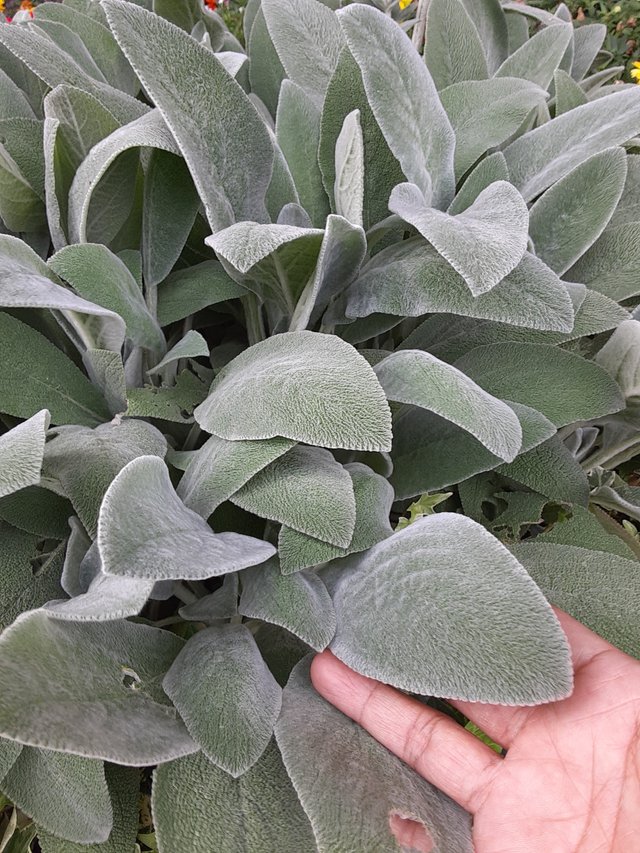Stachys byzantina, or Lamb's Ears, a beloved perennial with captivating silvery-white, wooly leaves that resemble a lamb's soft ears

Stachys byzantina, also widely known by its charming common name, Lamb's Ears, is a beloved perennial plant prized for its captivating foliage.
Originating from the rocky hills of Turkey, Armenia, and Iran, Lamb's Ears have become a popular addition to gardens worldwide. They belong to the mint family, Lamiaceae, and boast a low-growing, spreading habit, forming dense clumps of soft, velvety leaves.
The true stars of the show are undoubtedly the leaves, which aptly earned the plant its endearing moniker. These heart-shaped to oblong beauties are densely covered in a coat of silvery-white, wooly hairs, creating a luxuriously soft and fuzzy texture. The underside of the leaves is typically lighter in color compared to the top, often appearing a purer white. This captivating contrast adds further depth and visual interest to the foliage.
Lamb's Ears leaves come in various sizes depending on the specific cultivar. The standard Stachys byzantina features leaves measuring around 5 to 10 cm long, while some cultivars, like 'Big Ears', boast leaves reaching up to a foot in length! The leaf margins are slightly scalloped, though often obscured by the dense covering of hairs.
While the foliage is the undeniable focal point, Stachys byzantina does produce flowers during late spring and early summer. These small, light purple blooms appear on tall, spike-like stems that rise above the foliage. However, many gardeners choose to remove the flowers as they can detract from the beauty of the leaves and encourage legginess in the plant.
Beyond their aesthetic appeal, Lamb's Ears leaves offer several other benefits. Their dense covering of hairs helps the plant retain moisture, making it quite drought tolerant once established. Additionally, this fuzzy coat provides protection from the harsh rays of the sun and the damaging effects of cold winters. Lamb's Ears are also known for their resistance to deer and rabbits, making them a delightful choice for gardeners looking for low-maintenance, wildlife-resistant greenery.
Ref.:
 |  |
Upvoted! Thank you for supporting witness @jswit.